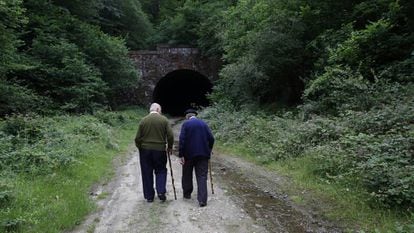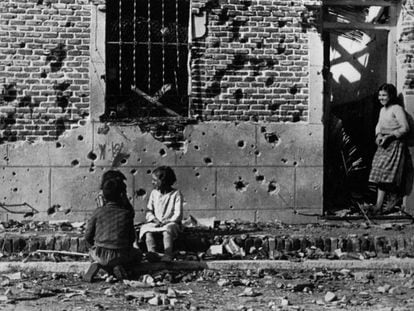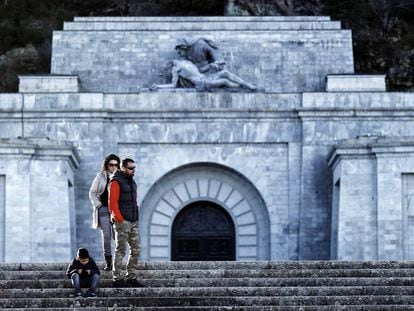What to do with an abandoned railroad tunnel built by Franco?
Two regions in northern Spain are pondering how to make use of a project that cost many lives
The Engaña railway tunnel, one of the longest in Spain, is part of an ambitious project proposed by Spanish dictator Francisco Franco 58 years ago, but was never completed. The military ruler’s political prisoners made up a large portion of its builders. Others were dragooned from neighboring towns, around 20 of whom lost their lives building this tunnel that was never used. Now, the regional governments of Cantabria and Castilla y León, in northern Spain, want to incorporate it into a footpath to revitalize the area, as well as compensating so much hard work.

Manuel Pelayo, 93, and Manuel Trueba, 83, are the only two people in the town of Vega de Pas still alive who participated in the building of the tunnel.
Pelayo enters the tunnel with the energy of a young man. Even in his old age, he vividly remembers the 12 years he worked in the tunnel, beginning when he was 27 in 1951. He recalls working an exhausting eight-hour shift, for which he was never properly paid.
Trueba worked in the tunnel for five years. “There were many of Franco’s prisoners, but we had no contact with them because they were kept apart,” said Trueba. “We saw many people die. The history books put the death count at 17 workers. I suppose it’s true.” Pelayo also mentions an accident that left one of his crewmates without an arm.
We saw many people die. The history books put the death count at 17 workers. I suppose it’s true Manuel Pelayo
The proposed 600-kilometer railway was supposed to link Santander, a city on the northern coast, with the Mediterranean. Franco shut down the project with only 30 kilometers completed. The Engaña tunnel was the last and most difficult part of the route. It took 20 years to complete work estimated to take two. The job was completed in 1959, but the tunnel, with two kilometers in Cantabria and five kilometers in Castile and Leon, has been abandoned since then.
The regional governments of Cantabria and Castile and León aim to turn the area into a tourist attraction. The idea that’s gained the most traction is turning the railway into a green pathway for pedestrians and bicyclists. They are also looking at installing a shuttle train to connect the two regions and bring people to the town of Valdeporres, where there a theme park has been built. The cost of the work is estimated at €15 million.
“Recovering Engaña is an act of historical justice,” argues Francisco Martín, the head of the Cantabria regional tourism board. “Collaboration with the Ministry of Public Works is essential to be able to act on the tunnel, since it is their property, and also to help finance the project.”
Víctor Manuel Gómez, a councilor in Vega de Pas, is also in favor of the project. “It’s interesting because finally the two regions would unite and give some sense to the work. Although abandoned, it arouses great interest and many people have come to know the tunnel.” Gómez sums up the general feeling as one of “failure and confusion. Many people died for nothing.”
Pelayo and Trueba look at the tunnel with a mixture of resentment, couple with nostalgia for their youth . “I would like it to be used, after all the work and money that’s been invested,” says Pelayo. “It would be good for the town, for the people, and for us all. The young people have left and this area is left empty.” Trueba is a bit more of a pessimist about the project. “I think it’s going to be difficult,” said Trueba. “I hope I’m wrong and they use it for something.”

English version by Debora Almeida.













































